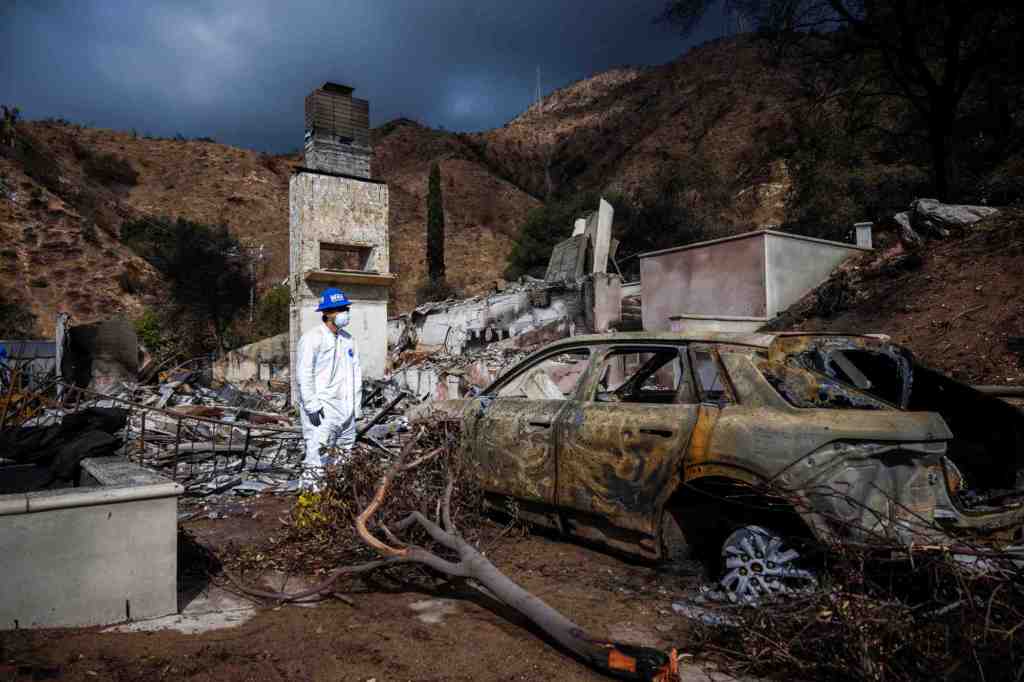
This column is based on my testimony last week to the U.S. House Judiciary Committee’s Subcommittee on the Administrative State, Regulatory Reform and Antitrust regarding the recent California wildfires.
SACRAMENTO – One of the common themes in my writing has been the state’s commitment to expanding bureaucracy and regulation, without much regard for whether the new programs accomplish their stated goals. Residents and businesses simply deal with the new taxes and red tape and adapt. California is such a beautiful and energetic place that people here muddle through despite the burdens the state government puts in their way.
But the Los Angeles wildfires – likely to be one of the costliest natural disasters in U.S. history – have exposed festering regulatory hurdles that have exacerbated the crisis. Many are years in the making, maddeningly complex and not given to quick solutions. It’s a confluence of bad policy involving brush clearance, water, insurance, firefighting, housing and climate change.
Simply put, California has created a tangled web of regulation that renders this once-innovative state incapable of accomplishing anything efficiently. Instead of building a resilient system that handles whatever Mother Nature throws our way, our state constantly uses climate change as an excuse for inaction on nuts-and-bolts issues.
Regarding brush clearance, the governor has agreed that we need to step up the process. The California Environmental Quality Act, or CEQA, and other laws require Environmental Impact Reports (EIRs) for clearance projects and two to three approvals for controlled burns. The state prioritizes such boutique “climate” projects over its fundamental responsibilities, and even those projects are plagued by cost overruns and delayed timelines.
The wildfires have also highlighted California’s counterproductive insurance regulations. It can take many months for insurers to wade through the process of hearings, rate reviews and opposition to such hikes by consumer-attorney “intervenors” who earn large fees for their efforts. This process is so cumbersome that it reduces competition, leading to too-few insurers.
The problem goes back to Proposition 103, the 1988 ballot initiative that made the state insurance commissioner an elected position, instituted the prior-approval system for rate increases and rolled back rates. It created a price-control system. Unable to easily adjust rates to reflect risk, insurers quietly – and then not so quietly – began exiting.
The insurance commissioner crafted a suite of useful reforms that were showing some promise, but why did it take so long? With this catastrophic wildfire, it remains to be seen whether these changes will be enough to stop the continued exodus.
Water policy is a somewhat tangential issue related to wildfires. But California has built little new water infrastructure since the 1970s when the population was roughly half what it is today. The state passed a major water bond a decade ago, but we’ve seen little progress on building traditional water infrastructure projects. The state foolishly blocks privately funded water projects that could vastly expand water resources. For instance, the California Coastal Commission in 2022 rejected a desalination plant in Huntington Beach over concerns about plankton.
More water would not have stopped the wildfires, but additional water resources would bolster firefighting efforts and mitigate some of the effects of drought seasons. Again, water policy just has not been a state priority with lawmakers pointing fingers at climate change without recognizing policies they could embrace that would mitigate its effects.
Instead of building the basic water infrastructure prioritized under, say, the Pat Brown administration, recent administrations have focused almost entirely on conservation and rationing. Approximately 50 percent of California’s water flows out to the Pacific, 40 percent is used for agriculture and 10 percent is for urban uses. Only 5.7 percent is used by households, so limiting swimming pools is no solution.
We’ve seen criticisms about an inadequate number of firefighters. Public databases show an abundance of LA firefighters earning total compensation packages above $500,000 a year, with one captain earning more than $900,000. If pay reflected market rates, California governments could afford to hire more of them rather than relying on underpaid prison labor.
Finally, I want to touch on California’s cumbersome building regulations, which are a notable hurdle in the rebuilding process. Thankfully, the governor issued an executive order suspending CEQA, which poses endless obstacles, and the Coastal Act for LA wildfire victims. But why has it taken a disaster to do so? State officials have relaxed some of these rules for specific high-density building projects and sports arenas, but have failed to reform them in a far-reaching manner.
No one failing resulted in the recent devastation. Instead, little by little California has built up an administrative state noted for its reliance on regulation and bureaucracy. Instead of reforming rules that impede progress, the state just spends more money and adds more rules. When disaster strikes, our officials point fingers elsewhere. I’m hoping the heartbreaking nature of the wildfires will finally cause state officials to rethink this failed approach.
Steven Greenhut is Western region director for the R Street Institute and a member of the Southern California News Group editorial board. Write to him at sgreenhut@rstreet.org.



